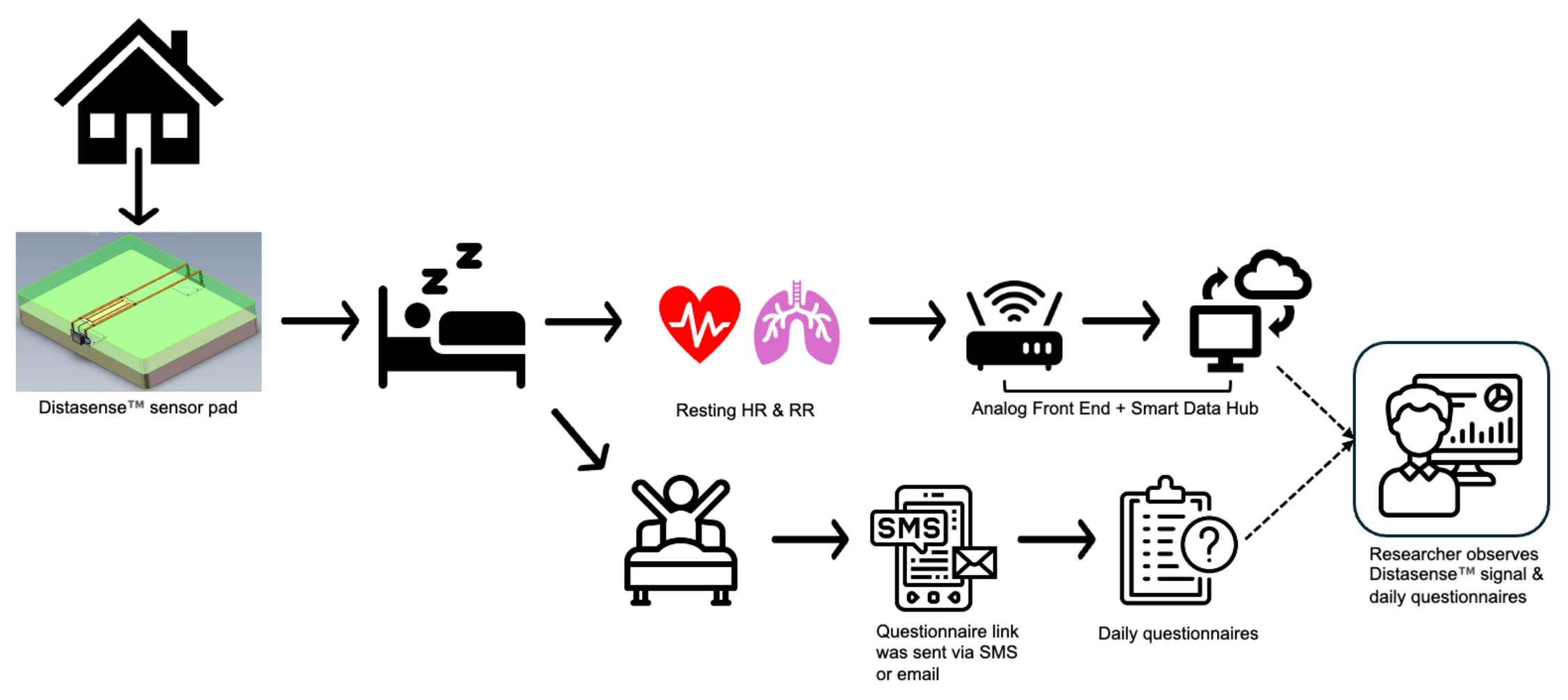Machine learning algorithms informed by real world COPD experience
Detect-Ex is the largest and longest longitudinal study of COPD exacerbations. The study is led by Dr. John Hurst, Professor of respiratory medicine at University College London and consultant respiratory physician at Royal Free London NHS Foundation Trust.
Launched in 2023, Detect-Ex is targeting 75 patients, with at least one exacerbation in last 12 months, for one year of data collection by the LDT system.
The LDT system captures heart rate, respiratory rate, and other measures of motion and sends them to a HIPAA compliant cloud for analysis.
Publication is pending.
Detect Ex initial studies to be presented at ERS: "Diagnostic accuracy of a novel contactless monitoring device to detect exacerbations of COPD" has been selected for presentation in "Poster session" entitled "Home monitoring in asthma and COPD" at the ERS Amsterdam 2025 Congress. The session will be held on 29/09/2025 from 08:00 to 09:30 in PS-14.
Interim 12 Month Results of Detect-Ex Presented at ERS
Read our interim 12-month results of Detect-Ex presented at ERS below.
Diagnostic accuracy of a novel contactless monitoring device to detect exacerbations of COPD
Shaogi Syam¹, Arafa Aboelhassan², John R Hurst¹ ³
¹UCL Respiratory, University College London, London, United Kingdom
²Department of Chest Diseases and TB, Faculty of Medicine, Assiut University, Assiut, Egypt
³Royal Free London NHS Foundation Trust – London, United Kingdom
Introduction
COPD exacerbations have a significant impact on patients’ health and quality of life, as well as contributing substantially to socio-economic burden.¹
Remote home monitoring to support earlier detection of exacerbations has shown promise in reducing the number of emergency visits and hospital admissions. However, the evidence to support widespread adoption is far from conclusive². Further investigation of the use of signals measured in a person’s home in providing early, accurate and objective diagnosis of COPD exacerbation is needed.
Explanation
This is an interim analysis from a 12-month prospective observational cohort study called Detect-Ex, using the Distasense™ monitoring tool.
Keypoints
- Baseline: 7-stable days with 3 hours good quality data
- Threshold: Personalised 2 SD from the mean baseline
- Updated features feeding machine learning:
- Respiratory waveform
- Variability
- Restlessness
- Motion Dataset analysis: CatBoost-based prediction model.
Methods
We assessed the diagnostic accuracy of the DistaSense™ device, providing overnight non-contact monitoring of heart rate (HR) and respiratory rate (RR) to provide early detection of COPD exacerbations. A predictive model using machine learning was developed to identify exacerbations, updated from that presented in the original abstract which had a sensitivity of 47% and specificity of 95%, and which now includes analysis of motion.
Result
Machine learning model predicts exacerbations 5 days early with 85% sensitivity, 95% specificity, 25% positive predictive value, and 99% negative predictive value.
Conclusion
In the largest study of its kind reported to date, the DistaSense™ device offers exciting potential to support early and objective diagnosis of COPD exacerbations based on non-contact monitoring HR, RR and motion.
References
1. Hurst, J. R., Skolnik, N., Hansen, G. J., Anzueto, A., Donaldson, G. C., Dransfield, M. T., & Varghese, P. (2020). Understanding the impact of chronic obstructive pulmonary disease exacerbations on patient health and quality of life. European Journal of Internal Medicine, 73, 1–6.
2. Robert Wu, Jansen Zhou, Alex Mariakakis, Eyal de Lara, Jeyani Jeyaparan, Andrea Gershon - Determining what patients admitted with a chronic obstructive pulmonary disease (COPD) exacerbation will use for remote clinical monitoring: a patient engagement survey: BMJ Open Respiratory Research 2025;12:e002841.
The Power of Overnight Heart Rate Monitoring to Predict Exacerbations was Established in 2020
Once Daily Versus Overnight and Symptom Versus Physiological Monitoring to Detect Exacerbations of Chronic Obstructive, Pulmonary Disease: Pilot Randomized Controlled Trial, Hurst et al, JMIR Mhealth Uhealth 2020 | vol. 8 | iss. 11
Key Conclusion:
“…Overnight monitoring of heart rate has the greatest potential to detect or assist in the detection of exacerbations of COPD and is significantly better than once-daily measurement.”
Figure 2. Chronic obstructive pulmonary disease assessment test score (green line) and peak expiratory flow (blue line) changes pre and post exacerbation in 27 patients with chronic obstructive pulmonary disease. The y-axis represents Z score relative to the patient’s baseline mean. The x-axis represents the time expressed in days. Day −15 is the mean of the stable period, days −14 to −1 is the preexacerbation period, day 0 is the day of initiation of treatment for exacerbation, and days 1 to 13 is the postexacerbation recovery period. The red lines represent the threshold limits of ±1.96 SD.
About Dr. John Hurst:
569+ peer-reviewed publications focused on COPD
COPD Lead, Royal College of Physicians’ National Asthma and COPD Audit Program
Associate Editor, European Respiratory Journal







